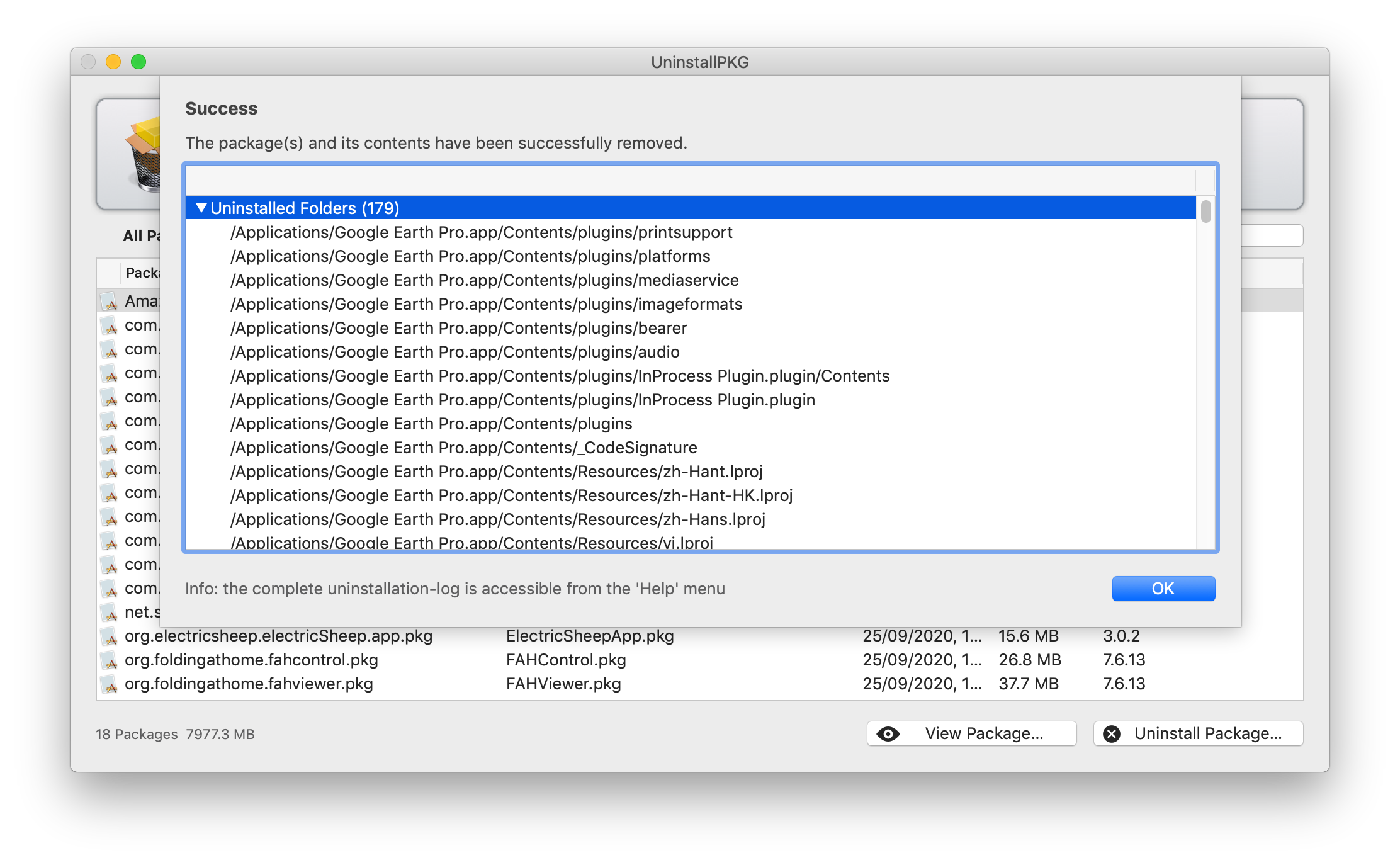

- #UNINSTALLPKG UNINSTALL HOW TO#
- #UNINSTALLPKG UNINSTALL MAC OS X#
- #UNINSTALLPKG UNINSTALL FULL#
- #UNINSTALLPKG UNINSTALL WINDOWS 10#
#UNINSTALLPKG UNINSTALL WINDOWS 10#
And check if the program has been successfully uninstalled from your Windows 10 computer.
#UNINSTALLPKG UNINSTALL HOW TO#
The causes for why can’t remove a program on Windows 10 are not sure, but you can check the 6 solutions below for how to force uninstall a program that won’t uninstall in Windows 10. However, sometimes you may be unable to uninstall program Windows 10 from Control Panel, etc. Generally you can easily uninstall program in Windows 10 from Control Panel, Settings, or the “ Add or remove programs” in Start menu.

Here is my solution for uninstalling PKGs implemented in Python. But for those who have some level of technical comfort and knowledge, this utility is a gem. People need to know what the potential consequences might be.
#UNINSTALLPKG UNINSTALL FULL#
Nevertheless, it is essential to do a full backup prior to modifying one's installed OS. I've purchased a subscription, and I'm removing these remnants as well.įor me, the bottom line is that the UninstallerPKG app if far more efficient than entering commands in Terminal, and it's far safer too. These remnants could potentially be bloating the OS, and impacting performance. Additionally, it identified remnants of other packages that I had removed years ago. In moments, it removed the orphaned remnants. The trial version provides three free uninstallation, and so I tried it. It would have taken me days to remove them manually. Sure enough, there were long lists of orphaned parts. He suggested a few commands to discover what parts of MacFuse and NTFS were installed, and the locations they existed. I posted this in a thread in Apple's Community Support forum, and received additional help from a fellow named Drew who apparently has a lot of experience using terminal. There were items that remained from the MacFuse installation and from Paragon's NTFS. I spent days trying to find out what was going on, and I finally figured out what the key components were.
#UNINSTALLPKG UNINSTALL MAC OS X#
And because they persisted in my system, Migration Assistant copied them into the Mac OS X system on my new MBP, the NTFS volume wouldn't mount on my MBP. However, it turns out that there were still components that remained. I had deleted these using the vendors own "uninstaller" tools. Over years, I've also installed (and uninstalled) various utilities so that I can write to NTSF volumes, such as MacFuse and Paragon's NTFS. I've own many Mac OS X MacBooks over the years, and each time I got a newer one, I would use Apple's Migration Assistant to move my apps and documents to my newer MacBook. The volume mounted on my iMac and my backup MacBook, but no on my MBP.


Offering a recent experience, I was having trouble mounting an NTFS volume on my MacBook Pro.


 0 kommentar(er)
0 kommentar(er)
